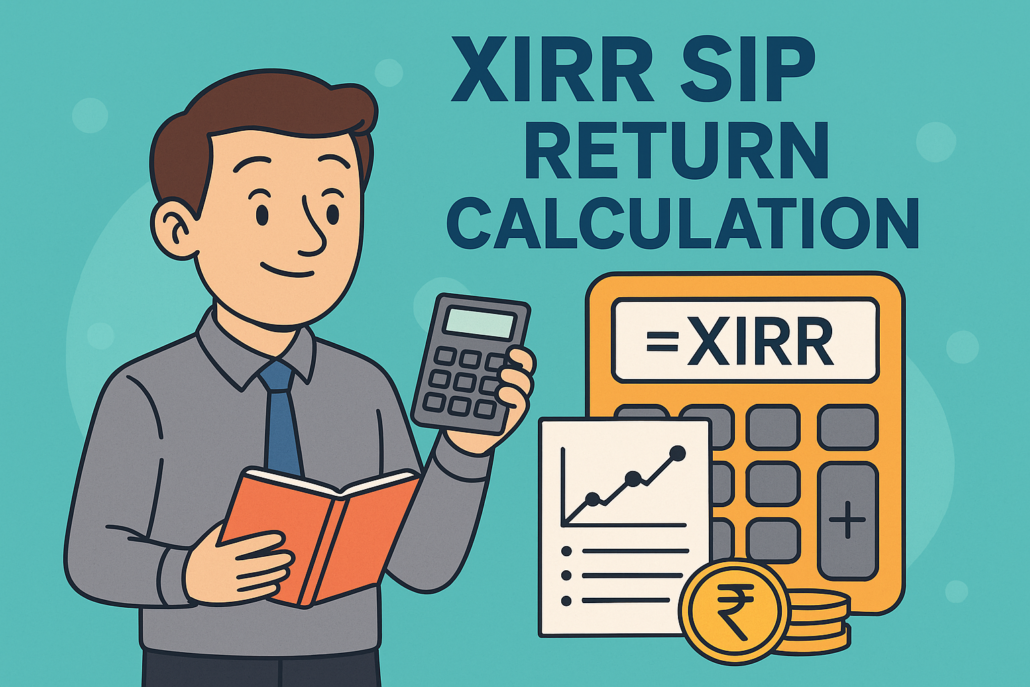XIRR SIP Return Calculation: A Comprehensive Guide
Investors in Systematic Investment Plans (SIPs) often wonder how much they really earn, especially when investments are made irregularly. This is where XIRR SIP return calculation becomes invaluable—it accurately annualizes returns based on cash flow and dates.
What is XIRR in SIP?
XIRR, or Extended Internal Rate of Return, calculates your annualized return when you have multiple investments or redemptions at different dates. Unlike CAGR, it accurately accounts for exact cash flow timing and amounts
Features of XIRR in SIP
-
Handles irregular cash flows like additional investments, pauses, or withdrawals
-
Incorporates exact dates, tracking the time value of money precisely.
-
Annualized and comparable, giving a standardized return metric.
-
Versatile beyond SIPs—usable in ULIPs, SWPs, mutual funds, or any irregular investment schedule
Why XIRR is Ideal for SIPs
SIPs involve monthly or quarterly investments over different market conditions. CAGR wrongly assumes a lump-sum at the start. XIRR corrects this by considering each instalment’s actual date and value, offering the “true” annualized SIP return
Step‑by‑Step XIRR Calculation
Using Excel or Google Sheets {#using-excel-or-google-sheets}
-
List all transaction dates (investments negative, withdrawals or final value positive).
-
Apply formula:
-
The result is the annual rate of return (e.g., 0.158 = 15.8%)
-
Example: A Rs 6,000 monthly SIP + Rs 20,000 lump sum yields ~15.8% XIRR
Using Online XIRR Calculators {#using-online-xirr-calculators}
-
Enter cash flow dates and amounts.
-
Include maturity or current value.
-
Calculate: tools like Groww or Fincart give instant XIRR results
Importance of XIRR in SIP
-
Offers clarity on personal returns, matching your actual investment pattern.
-
Enables comparison between SIP, SWP, lumpsum, or ULIP returns
-
Better decision-making—whether to continue, pause, or top-up your SIP.
Risks and Limitations of XIRR
-
Requires accurate cash flow data—incorrect dates/amounts distort results
-
Short‑term SIPs may yield unreliable XIRR due to limited compounding
-
Assumes reinvestment at the same return rate, which may not hold true
-
Ignores risk and volatility, focuses purely on return rate
XIRR vs CAGR (and IRR)
| Metric | Cashflow Timing | Use Case |
|---|---|---|
| CAGR | Ignores | Ideal for lump-sum or equal periodic investments |
| IRR | Fixed intervals | Suitable when cash flows are equally spaced |
| XIRR | Exact dates | Best for irregular cash flows like SIPs, ULIPs, SWPs |
Conclusion
XIRR SIP return calculation gives investors a realistic view of SIP performance. It’s accurate, flexible, and better suited than CAGR for real-world investing. Use Excel or trusted online XIRR calculators regularly to benchmark your returns and make informed investment choices.
![]()




Pingback: Top 9 Personal Finance Habits of Parineeti Chopra will make you financially successful in 2025 - Cash Babu